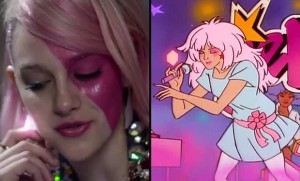Exploring graffiti’s true colors
October 30, 2016
Graffiti is a personal aesthetic or design that often appears in public locations such as back alleys. There are many opinions: graffiti can be seen as beautiful or unlawful.
I consider graffiti as a creative form of art — something that represents one’s personality. It covers all ranges of the art spectrum — it has the potential to convey both humor and deep meaning. Something like this should not be condemned.
But the question remains with the fine line between vandalism and art. Many times graffiti is thought of as a jail-worthy crime, and this insults artists who are passionate about their work. There are a few places where graffiti is celebrated as true art, like Hosier Lane in Melbourne, Australia, which hosts some of the world’s astoundingly beautiful artwork.
But graffiti is more than just a painting or a drawing — it often brings social and political situations to light. Graffiti artist Banksy drew attention in 2003 when he painted an image on the West Bank wall criticizing Israel’s policies toward Palestine. He also negatively portrayed the use of tear gas by the French police in the Calais refugee camp by creating a mural that depicted Cosette from the musical “Les Miserables” crying as a cloud of tear gas seemed to cover her. Sharing social and political ideas enables artists to show extreme levels of candor and create meaningful discussions in society.
The problem with graffiti is that marking a property without the consent of the owner is considered defacement, a crime punishable by law. Some graffiti artists have crossed the line by disfiguring ancient sites in places like Athens, Greece (Greek Reporter). Art is for everyone to appreciate, but recklessly destroying ancient sites or nature in the name of graffiti not only hurts an area, but also ruins the reputation of graffiti as art.
Certain boundaries need to be set up that honor pro perty rights as well as acknowledge graffiti as art. Overstepping these boundaries would be considered illegal, but this would ultimately help graffiti lose its bad reputation and help more people appreciate it.


